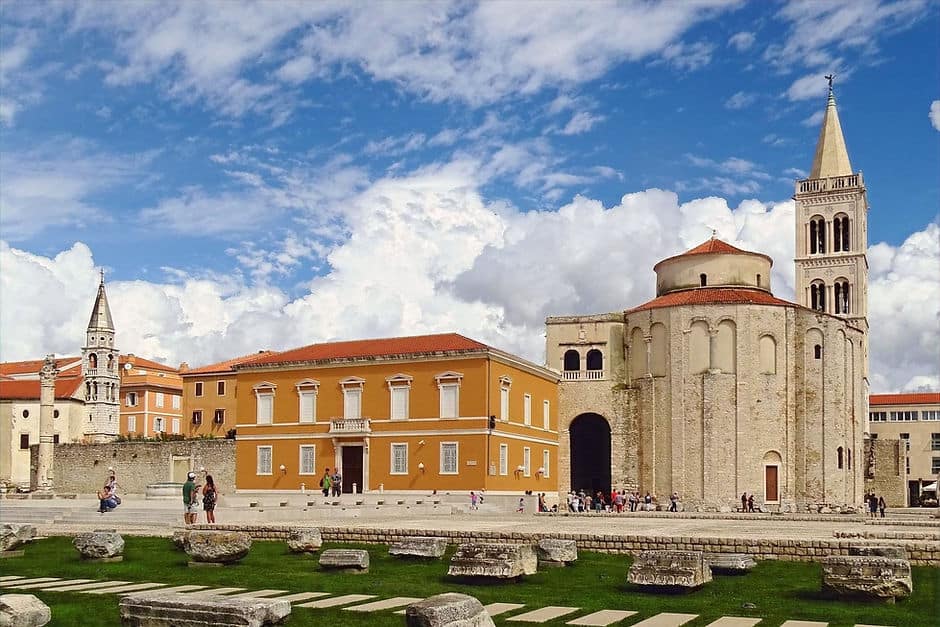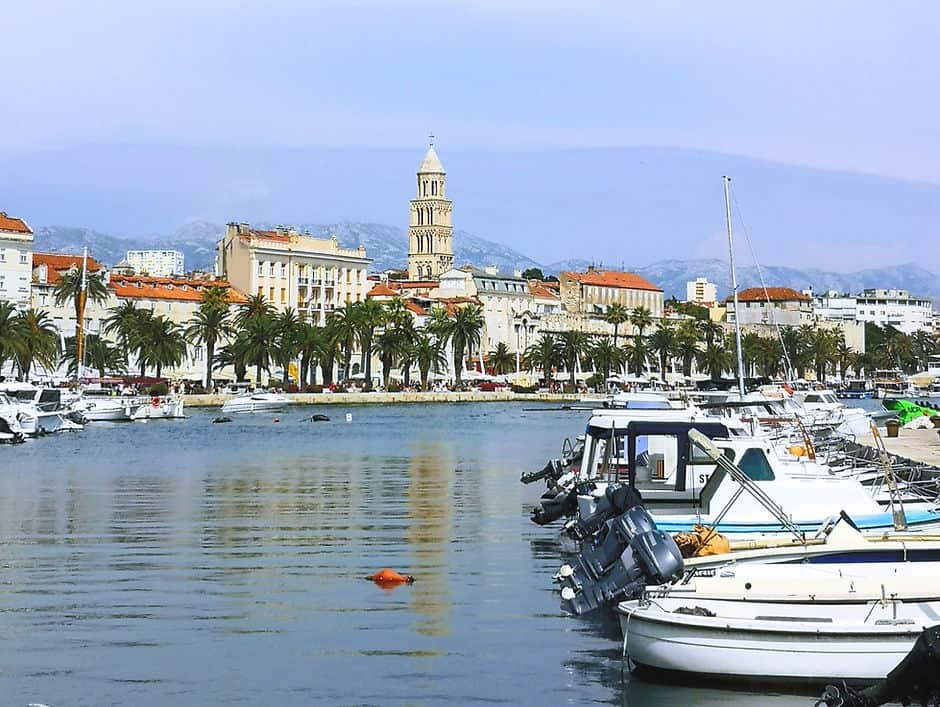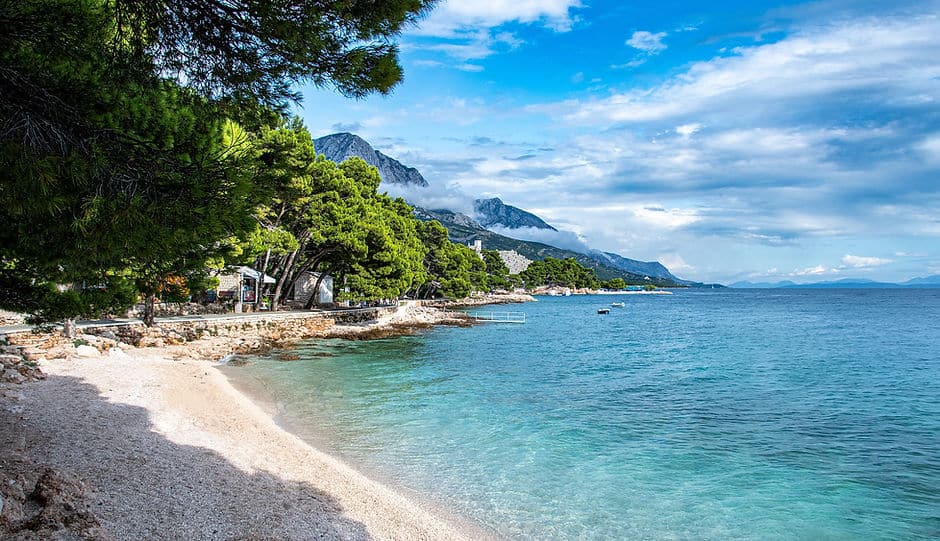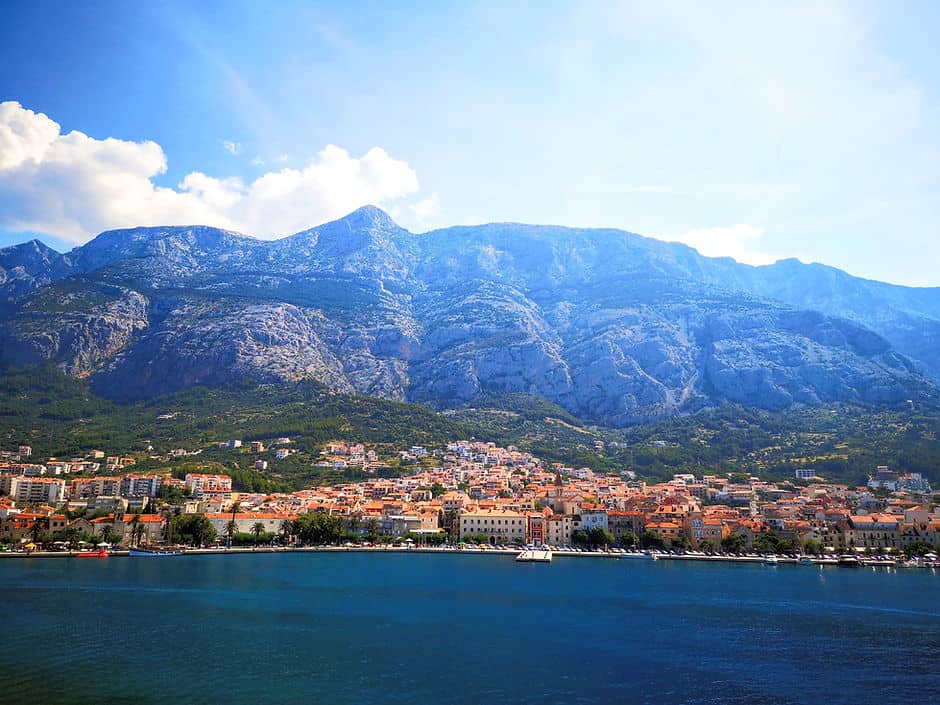
This post may contain affiliate links. I receive a small commission if you use these links, with no extra cost to you.
If you’ve not been to Croatia yet, why not?! It’s beautiful! Croatia is a diverse country, known for its beautiful crystal clear sea, gorgeous islands, lush national parks, historic UNESCO sites and pretty coastal towns. It’s easy to see why it’s one of the most popular destinations in the Balkans region.
There’s so much to do in Croatia and so many amazing places that you could choose from to add to your itinerary. With only 14 days to spare, I planned out a route which would take myself and my husband from Split to Zadar, taking in the beautiful Krka and Plitvice National Parks, before travelling back down to the stunning coastline of the Makarska Riviera.
If you need some inspiration for where to go in Croatia, read on to discover my epic two week itinerary for visiting some of the best places Croatia has to offer, in just 14 days!
Contents
Croatia 14 day Itinerary:
1. Days 1-4: Split
2. Day 5: Day trip from Split to Hvar
3. Day 6: Krka National Park
4. Days 7-8: Zadar
5. Day 9: Plitvice National Park
6. Days 10-14: Makarska
7. Would I change anything on this 14 day Croatia itinerary?
Key information for travelling to Croatia:
1. How to get to Croatia?
2. What’s the best way to get around Croatia?
3. When is the best time of year to visit Croatia?
The best of Croatia in 14 days – an epic two week itinerary
Days 1-4: Split
We flew into Split from the UK and caught the airport shuttle bus to Split bus station. From there it was a short walk to our airbnb apartment, which was just outside of the historic centre of Split. In total, we had 5 nights and 4 ½ days in Split, which included a day trip to Hvar.
If you enjoy wandering around historic sights and eating at waterfront restaurants, you’re going to love Split. Split is known for the impressive Diocletian Palace – a Roman-Venetian palace complex which sits in the centre of the city. Spend a day visiting all the historic sights within the complex and admire the beautiful architecture, or book onto a guided walking tour to learn more about the history of the old city. Split’s old town is also full of narrow, cobbled streets, and old town squares with cute bistros. There’s an abundance of cafes, restaurants and ice cream parlours throughout the old town, and along the main waterfront promenade. Strolling along the promenade is another great way to spend a couple of hours, with views across the marina.
For the best views in Split, hike up to the Telegrin lookout on Marjan Hill. The well-signposted path sends you up a series of steps, but the workout is worth it for the view! From the lookout, you can see all across the city of Split and out to the Adriatic Sea.
Although Split is not known for its beaches, there are a couple to choose from, so you can spend a few hours relaxing or have a refreshing dip in the sea here too.
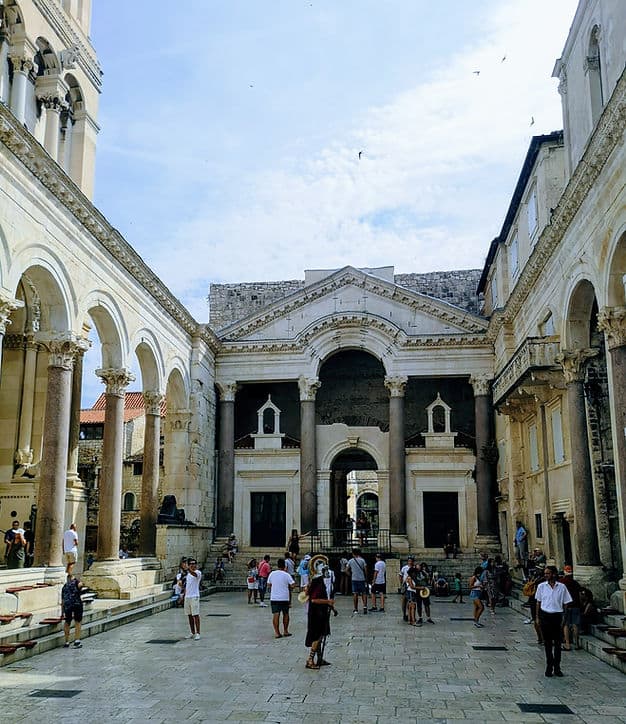
Day 5: Day trip from Split to Hvar
Hvar is one of Croatia’s most popular islands and its proximity to Split makes Hvar one of the best places to visit from Split on a day trip. Ferries run frequently between Hvar and Split and the journey time takes between 1-2 hours (schedules vary depending on the time of year, so check ahead). Hvar has a reputation as a party island and although there are big nightclubs and beach clubs on Hvar, they tend not to start properly until late in the evening, so if you are only in Hvar for the day, you will be able to enjoy the peace during the day.
I would recommend spending the full day in Hvar Town, rather than trying to fit in the whole island. You can also join an organised tour from Split to Hvar on board a luxury catamaran, speedboat or sailing boat.
If you opt for the ferry, it will take you to Hvar Town and from here you can spend the day wandering around on foot. Start your day with a stroll along the promenade and marina, before arriving at the old town, which centres around St Stephen’s church and Square. From here, make your way through the narrow passages of the old town up the hill, towards the Spanish Fortress. The walk up to the Spanish Fortress is one thing you shouldn’t miss when going to Hvar Town, the viewpoint in front of the Fort is incredible!
Hvar has many rock and pebble beaches you can cool off in, as well as lots of relaxed beachfront bars to enjoy a leisurely lunch. Stay for dinner and catch the last ferry back to Split to really make the most of the day in Hvar.
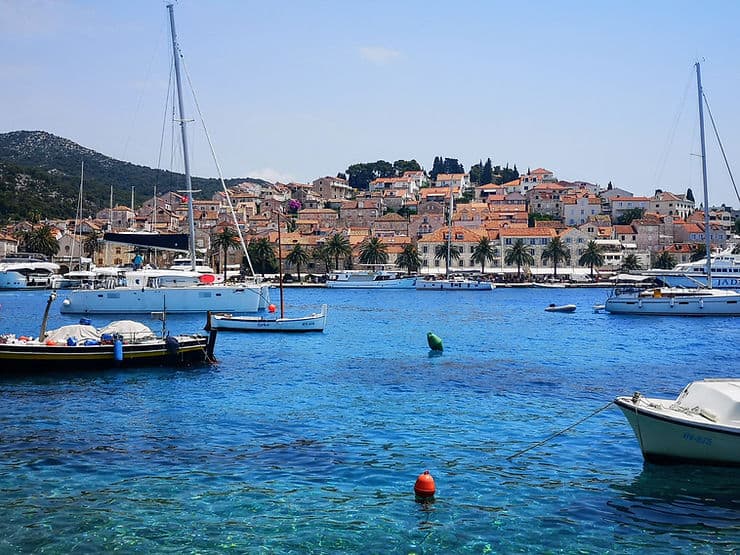
Day 6: Krka National Park
Krka National Park is one of Croatia’s most visited national parks. Not only is it very beautiful, but it is also very convenient to get to, sitting in the centre of Split and Zadar.
At this point in our trip, we decided to hire a car and we spent the next few days taking a short road trip. From Split, we drove 1 hour to Krka National Park, and after spending the day there, we continued driving onto Zadar. Driving ourselves allowed us to have a bit more flexibility and we had planned to visit Plitvice National Parks later in the trip, so having our own car made sense for that. However if you don’t want to hire a car, then you can catch a public bus to Krka National Park from either Split or Zadar. There are also group tours which go to Krka National park, although these are more expensive.
Krka National Park has a series of seven waterfalls, as well as a beautiful lake, monastery, a cave and old water mills. The most popular waterfall in Krka National Park is Skrandski Buk. This waterfall gained popularity back when swimming was allowed in the base of the falls. However, since 2021 swimming has been banned at this site and no swimming is allowed anywhere in Krka National Park. Despite this, there are several beautiful nature trails that you can take through the park and it still remains one of the most popular national parks in Croatia.
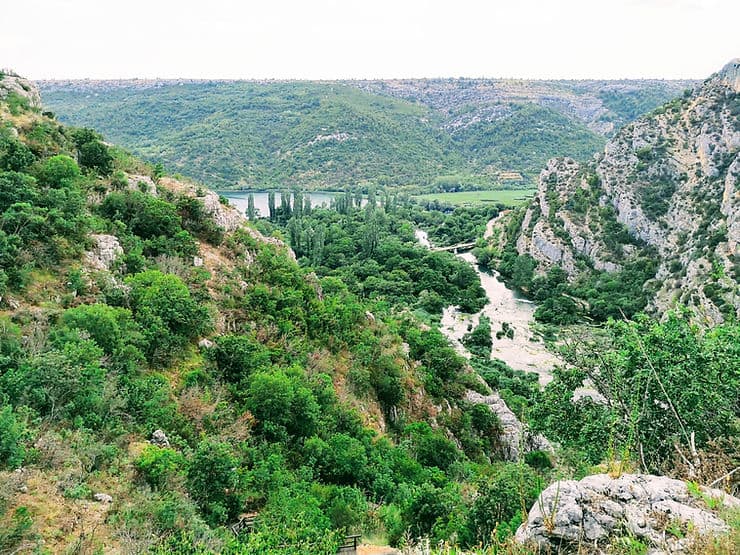
Days 7-8: Zadar
After spending the day at Krka National park, we continued driving further north to Zadar, where we spent 3 nights and had two full days to explore.
Zadar is most well known for its historic old town, which is populated with well preserved Roman and Venetian ruins. In the centre of the old town is the St Donat church and Cathedral of St Anastasia which sit either side of the Old Town Square. Strolling around Zadar’s historic old town, surrounded by thick stone walls, is one of the best things to do in Zadar.
Another popular spot in Zadar’s old town is the Riva (waterfront promenade). During the day you can sunbathe and swim from the Riva, but during the evening is when the Riva really comes to life. Here, you can see the Sun Salutation light show, watch street performers and listen to the sea organ, all whilst the sun sets over the sea.
Having the car whilst we were in Zadar also meant that we could explore some of the areas around Zadar, such as the small town of Nin, where you can bathe in medicinal mud at Queens beach! However, if you don’t have your own car, getting around is still relatively easy with the use of public buses or taxis.
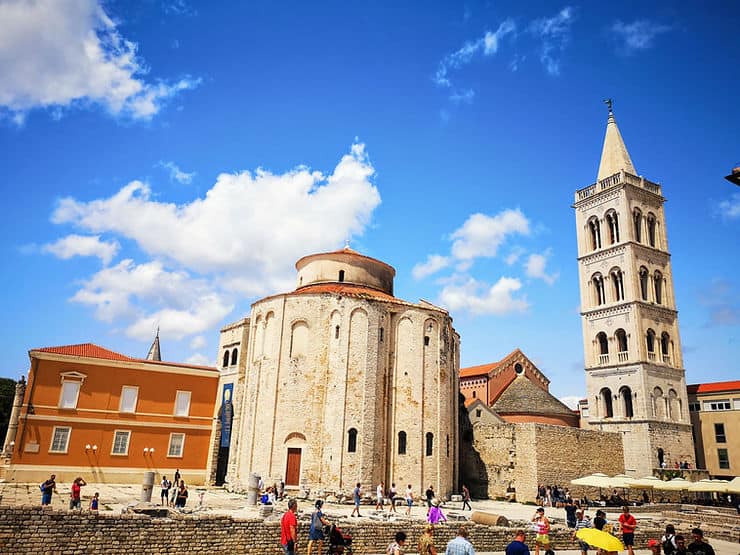
Day 9: Plitvice National Park
Leaving Zadar, we drove two hours inland to Plitvice National Park. If you don’t have your own car, then the best way to visit Plitvice from Zadar is to join a group excursion as there are no public buses.
Plitvice National Park is Croatia’s biggest and most popular national park, famous for the 16 inter-connected lakes and waterfalls that sit in the centre of the park. Wooden boardwalks run over the top of the emerald-blue lakes and nature trails take you around the edge, through pretty woodland. There are several walking routes to choose from and your entrance ticket includes the use of the electric boat and shuttle train to help you travel between the Lower Lakes and Upper Lakes within the park. Plitvice Lakes is one of the most beautiful national parks in Europe and is definitely worth a visit. However, I would recommend visiting outside of the main summer months. During the peak season, the narrow paths and boardwalks can get too crowded and it is less enjoyable when you are being herded around by hoards of people!
As Plitvice Lakes is so big and further away from the main tourist towns, I would recommend staying overnight in the national park. There are many hotels and guesthouses to choose from in the park. Staying overnight means that you can spend a long day in the park without having to worry about getting transport back in the evening or driving tired after a day of walking. If you’re a keen walker and would like to explore more of the park, you can purchase a two day entrance ticket.
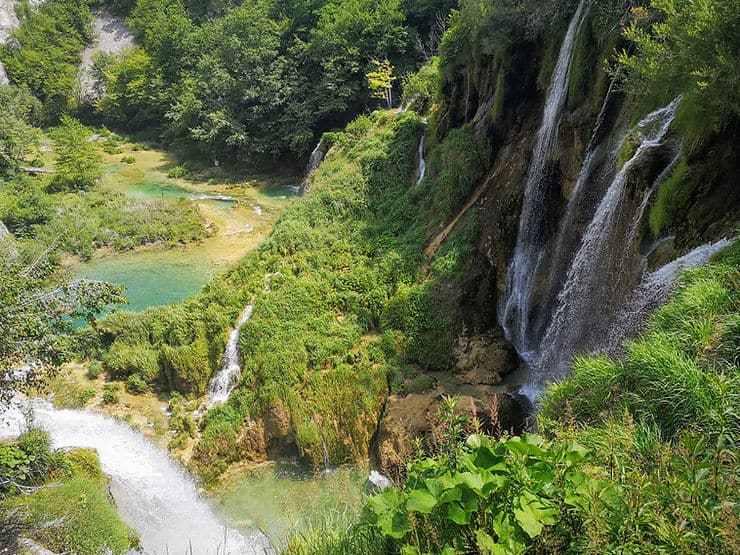
Days 10-14: Makarska
After staying the night in Plitvice Lakes National Park, we drove back to Split, where we dropped off our hire car, then we made our way to Split bus station and caught the bus to Makarska. Why not drive to Makarska? Well, when planning what to do in Makarska, we decided that we didn’t need a car and it worked out cheaper to drop it back off at the same location in Split and pay for the bus from Split to Makarska than it would have been to drive it all the way to Makarska and pay a relocation fee on the hire car.
Makarska is the main town on the Makarska Riviera and is known for its vibrant nightlife, seafront promenade and idyllic location, situated between Mount Biokovo and the beautiful beaches of the Adriatic Sea.
The town of Makarska is a great place to base yourself to explore the small villages and beautiful beaches along the Riviera. The town itself has a small old town, with narrow passageways and cute bistros as well as a huge array of modern restaurants with sea views, along the 4km-long promenade. Makarska also has some great spots for walking and hiking, with St Peter’s Forest Park, Osejava Forest Park and the Biokovo mountain range.
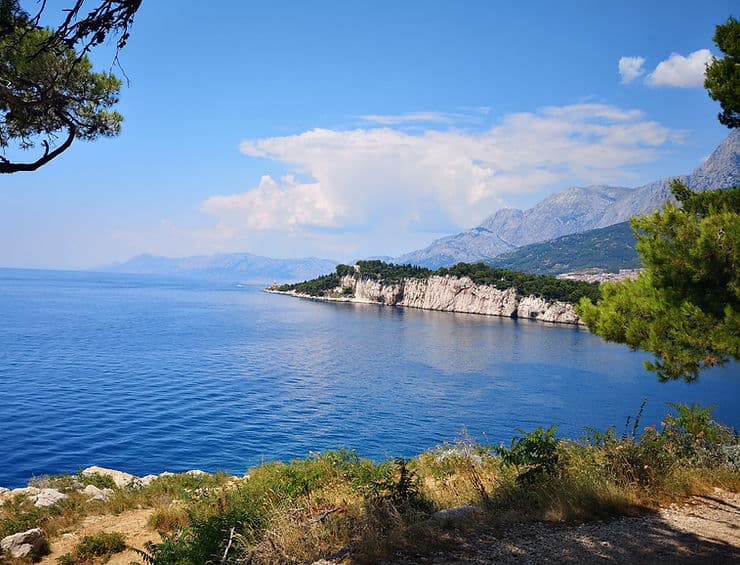
Would I change anything on this 14 day Croatia itinerary?
There were so many places that I wanted to visit during our trip to Croatia, but sadly we only had two weeks and I wanted to make sure that we had a decent amount of time in each place to properly enjoy it and take it in. Plus, this was a two week holiday and we wanted some time to relax in between sightseeing before we went back to work!
Looking back, I don’t think there is anything I would change, this 14 day Croatia itinerary had a bit of everything – beaches, sightseeing, historic towns and national parks. We really did have a great two week trip.
What about Dubrovnik?
Maybe you’re wondering why Dubrovnik is not on my itinerary?! Well, we were lucky enough to have spent one day in Dubrovnik on a previous cruise holiday, so we decided to explore other parts of Croatia that we hadn’t seen before. However, if you wanted to add Dubrovnik to the above 2 week itinerary, I would suggest having one less day in Split and Makarska and possibly skip Plitvice Lakes National Park, this will give you enough time to have 2 days in Dubrovnik and allow for travel time.
Dubrovnik is certainly one of the most popular places to visit in Croatia, and it would make a great addition to this itinerary. It is also a great choice for a stand-alone city break in Croatia, and you could easily spend 4 days in Dubrovnik, exploring the Old Town and the surrounding Riviera.
Key information for travelling to Croatia:
How to get to Croatia?
By Plane: The two main international airports in Croatia are Split and Zagreb. Split is often the most convenient airport to fly into as it is centrally located in the country. Split is also known for having good public transport links, making it a great place to start your trip from. Both Split and Zagreb airports have shuttle buses which connect the airport with the central bus station in the city. You can find out more and purchase tickets for either the Split or Zagreb airport shuttle bus here.
What’s the best way to get around Croatia?
Getting around in Croatia is really quite easy and you have several options to choose from.
Bus:
There are several buses which connect the main towns and cities in Croatia, especially along the coast, and travelling by bus is the cheapest way to travel in Croatia. The buses in Croatia are comfortable and you can take large luggage with you (although you may need to pay a little extra for luggage). In the peak summer months, it is recommended to book your tickets in advance. You can check the timetables and book tickets here.
Ferry:
If you are planning on visiting one of Croatia’s islands such as Hvar, Brac or Korcula during your trip, then you will need to book a ferry ticket. Ferry routes also run between major towns and cities on the mainland. Taking the ferry is a great alternative to the bus and you also get amazing views during the journey! One of the main ferry companies in Croatia is Jadrolinija, but you can see all options and routes here.
Car:
If you are short on time and have room in your budget, travelling by car can be the quickest and most convenient way to travel in Croatia. Driving in Croatia is on the right hand side of the road and driving here is relatively easy as the roads are generally of a good standard, with new, modern motorways. However, some of the smaller roads along the coast can be quite narrow with twists and turns along the cliff edges, so just be aware of this. If you are travelling on a motorway, note that there are some toll roads, so you will need to check your route beforehand.
Depending on where you visit in Croatia, you may find yourself using a combination of all of these modes of transport, which is exactly what we did!
When is the best time of year to visit Croatia?
The best time of year to visit Croatia is from May – September. During these months, the weather is hotter and you will have more sunny days.
As you would expect, during the peak summer holiday months of July and August, it does get very busy. The beaches can get crowded, restaurants are busier and the main tourist sights and hot spots have queues and tickets need to be purchased in advance. If you can, I would recommend avoiding these two months.
In my opinion, the best months to visit Croatia are June and September. These months will still offer warm, sunny weather, but with less crowds. If you are not too concerned with sunbathing, then even May would be a good time to visit, as you can still expect temperatures to be around the 20 – 24 degrees celsius.
In the low season and during the winter months, many of the tourist sights in Croatia have limited opening hours, or completely close. Some ferries also run with a limited schedule during the winter, so you will need to bear both of these things in mind when planning what month to visit Croatia and check ahead.

